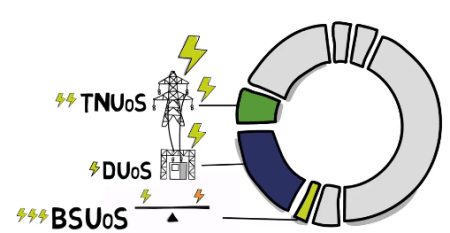
Journey to the heart of the energy market
This is a special year for Heysham 1 and 2, our twin nuclear power stations in Lancashire.
They’ve now proudly achieved 30 and 25 years (respectively) of safe operation. It was also the perfect setting for a workshop on changing energy costs with 15 energy managers and buyers from large businesses we work with.
It’s always interesting bringing large scale energy users to the point of generation. Touring unique facilities like the turbine hall, reactor pile cap, fuelling machinery and main control room feeds our inner energy geek. But this visit, at this time, gave our guests a special insight into how low carbon nuclear energy can now potentially be much more useful to them.
During his welcome address the station director explained what happens on the site. As he outlined how each unit of low carbon nuclear electricity his power station produces – the very kind that backs our Blue contracts – can be traced right back to source, he struck a chord with our guests.
Many of them face complying with the new greenhouse gas (GHG) emissions reporting obligation in October. Many are perhaps tussling with which GHG reporting standard to follow. Judging by the questions I received later, I sense many are now starting to see how beneficial it can be to choose an electricity supply contract backed by low carbon sources. The impact it can have on an organisation’s GHG emissions report is simply huge.
But the main purpose of the day was one of our Talk Power Briefings. These bite-sized sessions are intended to lift the lid on the energy market and help businesses to disentangle its inner workings.
Four speakers – myself included – spoke in detail about the different cost components of energy bills and what’s currently driving change in each area.
After sharing some analysis of the wholesale markets, we spent much of the workshop discussing non energy costs such as transmission, distribution and costs associated with low-carbon generation.
By next year these could make up as much as 44% of a large business’s energy bill. That makes understanding what’s driving the increases and the volatility in these cost components all the more important for energy managers.
We explained why they have become much more difficult to forecast as the energy landscape continues to change at pace. Our delegates shared their perspectives on the impact this is having on their approach to budgeting and purchasing energy. We learned a great deal from each other.
We’re running more Talk Power Briefings on 9 July in Birmingham, and on 27 August in London with a great cross section of our business customers already signed up to workshop the topic of thier energy investments with us.
If you’d like the full programme or to register, please drop us a line. It would be great to have you with us. And there will be more opportunities to join us at our stations later in the year too.


